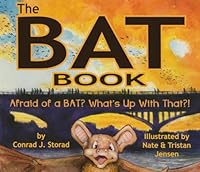Museums Matter: In Praise of the Encyclopedic Museum (Campbell Lectures)
Select Format
Select Condition 
You Might Also Enjoy
Book Overview
The concept of an encyclopedic museum was born of the Enlightenment, a manifestation of society's growing belief that the spread of knowledge and the promotion of intellectual inquiry were crucial to human development and the future of a rational society. But in recent years, museums have been under attack, with critics arguing that they are little more than relics and promoters of imperialism. Could it be that the encyclopedic museum has outlived its usefulness? With Museums Matter , James Cuno, president and director of the Art Institute of Chicago, replies with a resounding "No " He takes us on a brief tour of the modern museum, from the creation of the British Museum--the archetypal encyclopedic collection--to the present, when major museums host millions of visitors annually and play a major role in the cultural lives of their cities. Along the way, Cuno acknowledges the legitimate questions about the role of museums in nation-building and imperialism, but he argues strenuously that even a truly national museum like the Louvre can't help but open visitors' eyes and minds to the wide diversity of world cultures and the stunning art that is our common heritage. Engaging with thinkers such as Edward Said and Martha Nussbaum, and drawing on examples from the politics of India to the destruction of the Bramiyan Buddhas to the history of trade and travel, Cuno makes a case for the encyclopedic museum as a truly cosmopolitan institution, promoting tolerance, understanding, and a shared sense of history--values that are essential in our ever more globalized age. Powerful, passionate, and to the point, Museums Matter is the product of a lifetime of working in and thinking about museums; no museumgoer should miss it.
Format:Paperback
Language:English
ISBN:022610091X
ISBN13:9780226100913
Release Date:March 2018
Publisher:University of Chicago Press
Length:164 Pages
Weight:0.48 lbs.
Dimensions:0.5" x 5.5" x 8.4"
More by Conrad J. Storad
Customer Reviews
4 customer ratings | 4 reviews
There are currently no reviews. Be the first to review this work.
































































